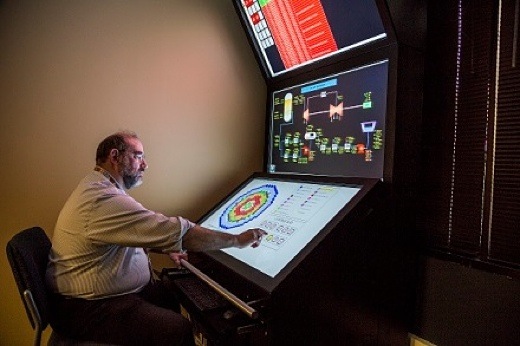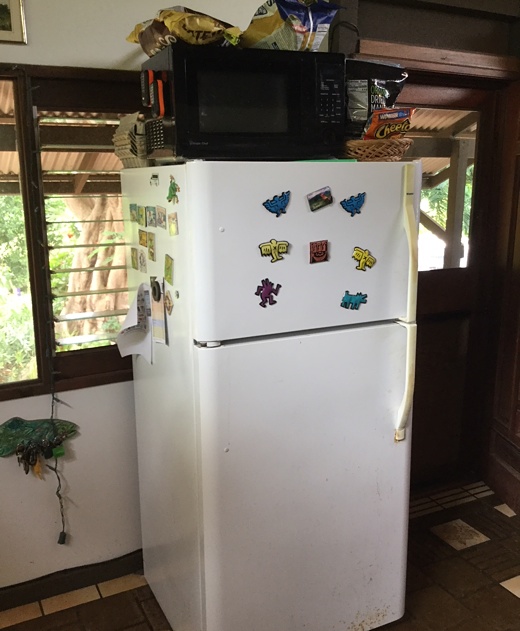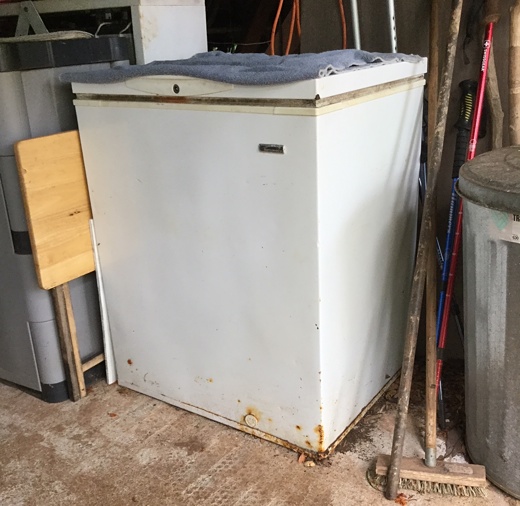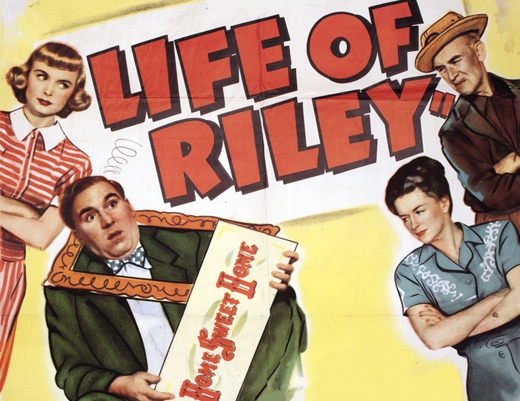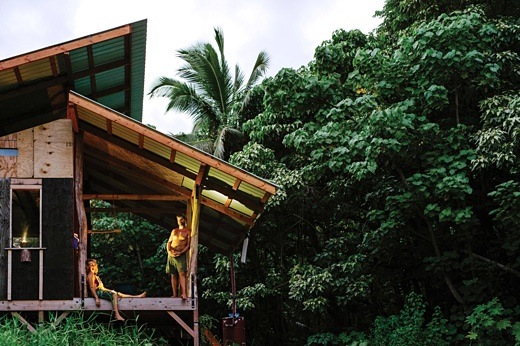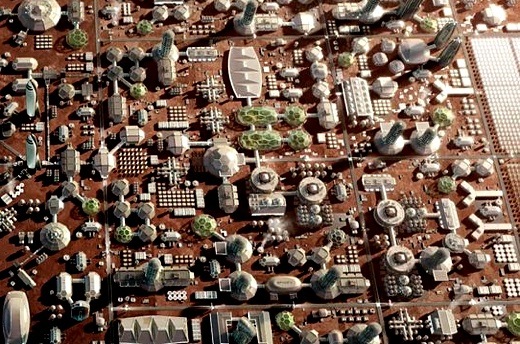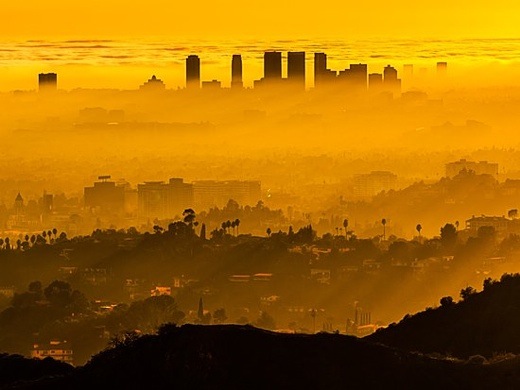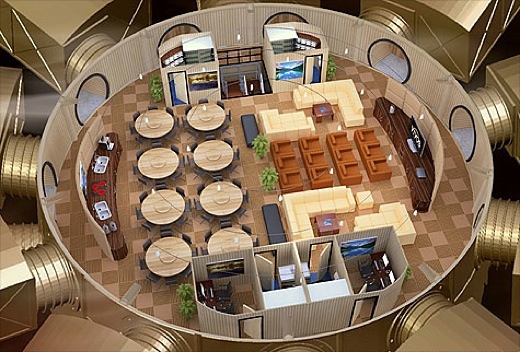SUBHEAD: Rare valuable minerals to be strip-mined from ocean floor by drones will endanger environment.
By Jon Letman on 29 August 2018 for National Geographic -
(https://www.nationalgeographic.com/environment/2018/08/news-race-to-mine-deep-sea-drones-seafloor-environmental-impact/)
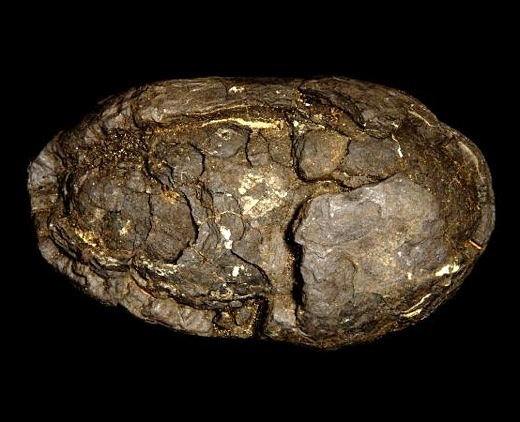
Image above: Polymetallic nodules like this one, made of layers of iron and manganese, sit on the deep seabed. Deep-sea mining companies are hunting for these nodules to use in the technology industry. From original article.
Closer than the moon, yet less well-mapped than Mars, the Earth’s seafloor is home to otherworldly creatures befitting a science fiction movie. Their remote habitat has caught the attention of humans, who are lining up to begin mining the bottom of the deep blue sea.
As technology and infrastructure drive the demand for minerals, and terrestrial resources grow harder to mine, the materials in the deep ocean are starting to look increasingly attractive to countries and companies.
“Deep-sea mining could end up having the largest footprint of any single human activity on the planet in terms of area of impact,” says University of Hawaii oceanographer Craig Smith.
It’s already underway: pioneer excavations in Papua New Guinea and Japan have taken advantage of advances in remotely operated vehicles, robotics, and communications technology to pioneer excavations. And companies like Lockheed Martin subsidiary UK Seabed Resources are eager to embark on a new deep-sea bonanza.
Over one million square miles of abyssal plain 12,000 to 18,000 feet deep is peppered with polymetallic nodules—vast fields of lumpy, black, potato-shaped mineral deposits.
Nodules range in size from a pea to a soccer ball and are rich in manganese, iron, copper, nickel, cobalt, and rare-earth elements, though they can take millions of years to grow a few millimeters.
The idea of mining these nodules, in part, led to the U.N. Convention on the Law of the Sea (UNCLOS) in 1982. It also resulted in the establishment of the International Seabed Authority (ISA) which oversees exploration claims in international waters.
Over half of those claims, some nearly 29,000 square miles in size, are in the Clarion-Clipperton Zone (CCZ), a region 75 percent as large as the continental United States that stretches some 3,000 miles across the equatorial eastern Pacific between Hawaii and Mexico. In total, the ISA recognizes 29 claims, although mining has yet to begin. Currently all activity in the CCZ is in the experimental or exploratory phase.
Craig Smith of the University of Hawaii recently led an expedition to study life on the seafloor in the western CCZ. “These are ecosystems that are counter-intuitive to us,” says Smith, describing an environment rich in biodiversity.
Smith explains that as many as half the animals living on top of nodules are related to the mineralogy. Mine those nodules, and you remove habitat for species before they’re even described.
Those creatures offer potential resources for pharmaceuticals and can provide new insights to how life begins. Smith calls them “the raw material for evolution.” But they evolved in waters as deep as 18,000 feet that are largely free of ocean currents or the light, vibration, and noise that would result from mining.
What’s more, mining will produce sediment plumes that may inhibit life on the seafloor and other habitats at varying depths.
“It’s recognized that this mining will inevitably impact very large areas of the seafloor,” Smith says, noting that modifying it could also have long-term impacts on how the ocean regulates the climate.
Carbon sequestration and the modulation of ocean acidity occur in the CCZ and elsewhere. Blanketing large areas of seafloor with sediment may affect the ocean’s ability to buffer against climate change.
“You can’t say that’s environmentally benign,” says Smith. “Society may decide it’s an acceptable impact given the tradeoffs, but it’s not benign.”
Smith argues that the time to establish protected areas and integrate them into deep-sea mining claim management is now. The seafloor, he notes, represents the largest ecosystems on the planet, adding,
“While the harmful effects of DSM on the marine environment are increasingly documented, far less attention is being paid to the potential effects of DSM on the human environment, specifically on the people living along the coast of Pacific Island nation-states,” says Julian Aguon, an environmental lawyer in Guam.
Cindy Van Dover, a deep-sea biologist and professor at Duke University Marine Laboratory, and Daniel Dunn of Duke’s Marine Geospatial Ecology Lab are part of an international team that has developed guidelines to help the ISA establish a conservation strategy for deep-sea mining along the Atlantic Ridge and elsewhere.
Adopting a precautionary approach, they hope to see 30 to 50 percent of potential mining areas set aside as “no mine” zones to protect deep-sea biodiversity, while still allowing some mining.
“Our big concern is that we know so little about what’s happening in the deep sea and about the species down there,” says Dunn.
Without understanding the connectivity between species, both he and Van Dover warn of the risk of seriously damaging biodiversity.
“I’m not sure if we have an idea of how the industry is going to compensate for damage to the environment,” says Van Dover. “Because clearly it’s going to damage the environment.”
.
By Jon Letman on 29 August 2018 for National Geographic -
(https://www.nationalgeographic.com/environment/2018/08/news-race-to-mine-deep-sea-drones-seafloor-environmental-impact/)

Image above: Polymetallic nodules like this one, made of layers of iron and manganese, sit on the deep seabed. Deep-sea mining companies are hunting for these nodules to use in the technology industry. From original article.
Closer than the moon, yet less well-mapped than Mars, the Earth’s seafloor is home to otherworldly creatures befitting a science fiction movie. Their remote habitat has caught the attention of humans, who are lining up to begin mining the bottom of the deep blue sea.
As technology and infrastructure drive the demand for minerals, and terrestrial resources grow harder to mine, the materials in the deep ocean are starting to look increasingly attractive to countries and companies.
“Deep-sea mining could end up having the largest footprint of any single human activity on the planet in terms of area of impact,” says University of Hawaii oceanographer Craig Smith.
It’s already underway: pioneer excavations in Papua New Guinea and Japan have taken advantage of advances in remotely operated vehicles, robotics, and communications technology to pioneer excavations. And companies like Lockheed Martin subsidiary UK Seabed Resources are eager to embark on a new deep-sea bonanza.
Over one million square miles of abyssal plain 12,000 to 18,000 feet deep is peppered with polymetallic nodules—vast fields of lumpy, black, potato-shaped mineral deposits.
Nodules range in size from a pea to a soccer ball and are rich in manganese, iron, copper, nickel, cobalt, and rare-earth elements, though they can take millions of years to grow a few millimeters.
The idea of mining these nodules, in part, led to the U.N. Convention on the Law of the Sea (UNCLOS) in 1982. It also resulted in the establishment of the International Seabed Authority (ISA) which oversees exploration claims in international waters.
Over half of those claims, some nearly 29,000 square miles in size, are in the Clarion-Clipperton Zone (CCZ), a region 75 percent as large as the continental United States that stretches some 3,000 miles across the equatorial eastern Pacific between Hawaii and Mexico. In total, the ISA recognizes 29 claims, although mining has yet to begin. Currently all activity in the CCZ is in the experimental or exploratory phase.
A reservoir for biodiversity
Craig Smith of the University of Hawaii recently led an expedition to study life on the seafloor in the western CCZ. “These are ecosystems that are counter-intuitive to us,” says Smith, describing an environment rich in biodiversity.
Smith explains that as many as half the animals living on top of nodules are related to the mineralogy. Mine those nodules, and you remove habitat for species before they’re even described.
Those creatures offer potential resources for pharmaceuticals and can provide new insights to how life begins. Smith calls them “the raw material for evolution.” But they evolved in waters as deep as 18,000 feet that are largely free of ocean currents or the light, vibration, and noise that would result from mining.
What’s more, mining will produce sediment plumes that may inhibit life on the seafloor and other habitats at varying depths.
“It’s recognized that this mining will inevitably impact very large areas of the seafloor,” Smith says, noting that modifying it could also have long-term impacts on how the ocean regulates the climate.
Carbon sequestration and the modulation of ocean acidity occur in the CCZ and elsewhere. Blanketing large areas of seafloor with sediment may affect the ocean’s ability to buffer against climate change.
“You can’t say that’s environmentally benign,” says Smith. “Society may decide it’s an acceptable impact given the tradeoffs, but it’s not benign.”
Smith argues that the time to establish protected areas and integrate them into deep-sea mining claim management is now. The seafloor, he notes, represents the largest ecosystems on the planet, adding,
“It may be that Deep Sea Mining [DSM] can be done in a way that doesn’t cause species extinctions or major loss of ecosystem services, although we still don’t know enough to be able to say that.”Others worry about the effects on humans. A UN resolution passed in the 1970s put deep-sea minerals in international waters outside the jurisdiction of any single country, limiting the power of countries—particularly island nations—that may see the most potent effects of pollution and marine debris.
“While the harmful effects of DSM on the marine environment are increasingly documented, far less attention is being paid to the potential effects of DSM on the human environment, specifically on the people living along the coast of Pacific Island nation-states,” says Julian Aguon, an environmental lawyer in Guam.
The unknown deep
Adopting a precautionary approach, they hope to see 30 to 50 percent of potential mining areas set aside as “no mine” zones to protect deep-sea biodiversity, while still allowing some mining.
“Our big concern is that we know so little about what’s happening in the deep sea and about the species down there,” says Dunn.
Without understanding the connectivity between species, both he and Van Dover warn of the risk of seriously damaging biodiversity.
“I’m not sure if we have an idea of how the industry is going to compensate for damage to the environment,” says Van Dover. “Because clearly it’s going to damage the environment.”
.
